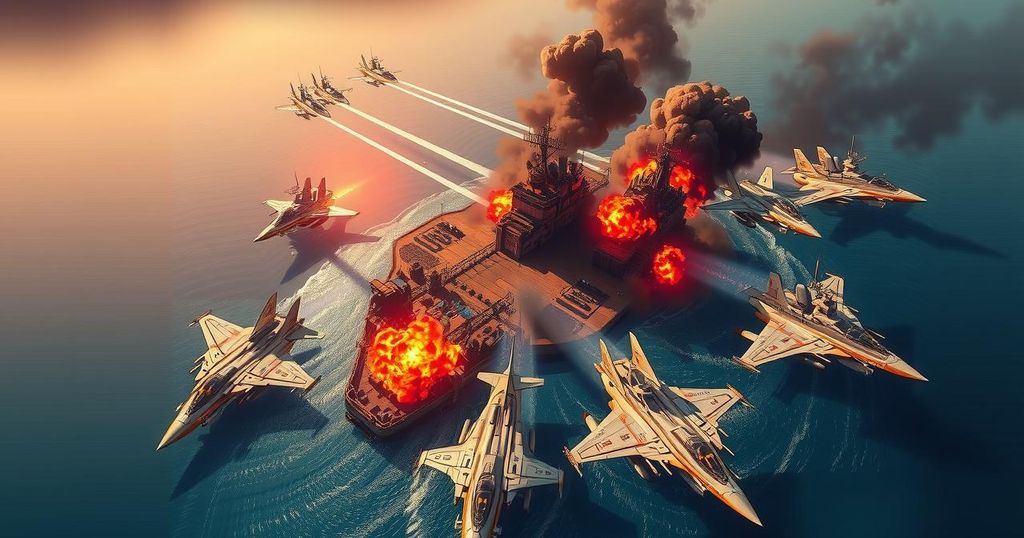China Undertakes Military Drills Around Taiwan, Labeling President a ‘Parasite’
China has launched large-scale military drills around Taiwan, referring to its president as a ‘parasite’ and warning against independence. These exercises are a response to escalating tensions, with Taiwan’s leadership denouncing Chinese threats. The U.S. appears to be re-engaging with Taiwan amid rising Chinese assertiveness.
China has initiated extensive military drills surrounding Taiwan, labeling the island’s president, Lai Ching-Te, as a “parasite”. Such exercises aim to “serve as a stern warning and powerful deterrent against Taiwanese independence,” reflecting Beijing’s determination to assert its claim over Taiwan, viewed as a renegade province. The military has emphasized operational readiness through combat patrols, alongside conducting maneuvers aimed at seizing control over significant maritime and land targets.
Following President Lai’s description of China as a “foreign hostile force” and the announcement of new defense measures in response to perceived threats, relations have further strained. China visualized President Lai as a cartoon bug in a provocative animation during these drills, asserting that he is jeopardizing Taiwan’s stability.
Taiwan’s defense ministry reported the monitoring of 19 Chinese naval vessels within close proximity to the island, coupled with military aircraft activity. In contrasting dynamics, there have been indications from the United States suggesting a renewed commitment to Taiwan, including a notable military aid release amidst the growing assertiveness from Beijing during the drills.
In summary, China’s military exercises around Taiwan are a significant escalation in tensions, underscoring Beijing’s aggressive stance toward the island’s independence. The recent remarks from Taiwan’s leadership and increased military readiness indicate a response to perceived threats, while the U.S. appears to be reassessing its support for Taiwan amidst these developments. This intricate geopolitical situation highlights the complexities of cross-strait relations, as both regional and international dynamics continue to evolve.
Original Source: news.sky.com








Post Comment